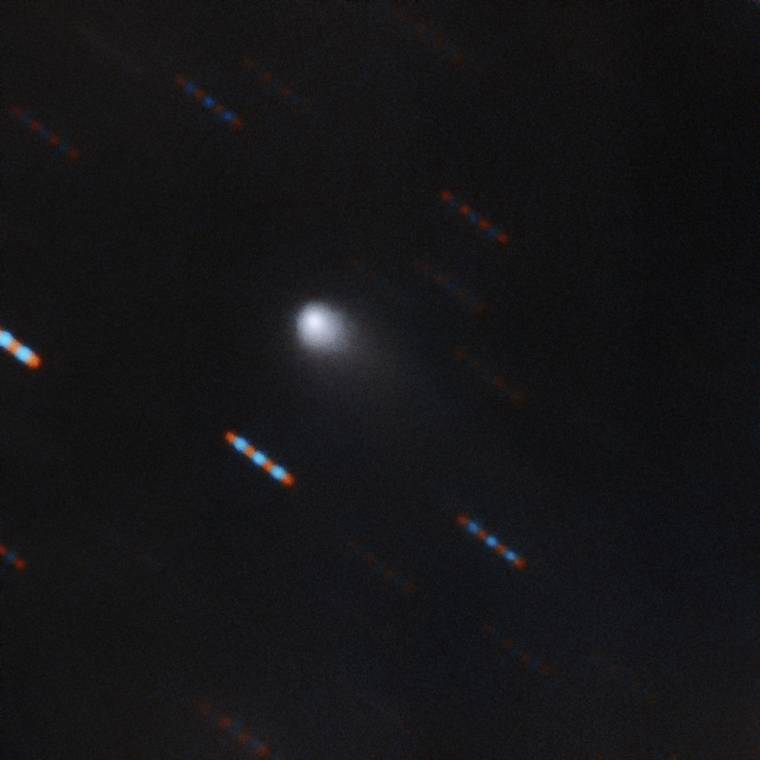Astronomers at the Gemini Observatory last week recorded an image of the second object ever observed from beyond our solar system.
The object — a comet designated C/2019 Q4 — was discovered Aug. 30 by Russian amateur astronomer Gennady Borisov.
“This is anything but ordinary,” said Gemini spokesman Peter Michaud. “When things like this are discovered, we drop everything.”
In the early morning of Sept. 10, astronomers at Gemini North Telescope on Maunakea were able to capture an image of the comet using two different colored filters which, when combined, produced a color image.
Although the image is in color, Michaud said its colors are not necessarily the same as those one would see with the naked eye, but are simply arbitrary colors that help astronomers pick out details of the comet’s composition. Then again, he added, a ball of ice and rock like a comet would probably not look too different from the fuzzy gray object revealed in Gemini’s photograph.
“This image was possible because of Gemini’s ability to rapidly adjust observations and observe objects like this, which have very short windows of visibility,” said Gemini astronomer Andrew Stephens in a statement Friday.
The comet is the first interstellar comet ever to be identified, and only the second known interstellar object. The first, a small asteroid called ‘Oumuamua, was discovered in 2017 by an astronomer at the Pan-STARRS telescope on Haleakala.
The comet will not come within 190 million miles of the Earth and is traveling at about 93,000 miles per hour. Michaud said it is not thought to be orbiting anything in particular, but is traveling through the cosmos independently of any other celestial body.
“It’s from outside of our solar system, so we can presume that it came from another solar system,” Michaud said. “Presumably it escaped from there and it happened to come here.
“If you think about the scale of space, there’s most likely a lot more of these things out there,” Michaud continued. “The odds against an object like this getting so close to us are so high, there have to be more of them.”
As the comet continues to move on its path out of the glare of the sun, Gemini will continue to observe it “in a more ordered fashion,” Michaud said. However, once it leaves our solar system, the comet will be gone forever, as its trajectory makes it unlikely to be caught by the sun’s gravitational pull.
Email Michael Brestovansky at mbrestovansky@hawaiitribune-herald.com.

